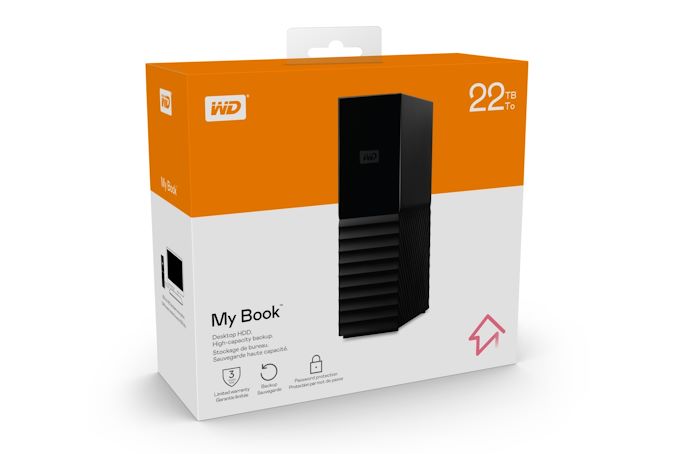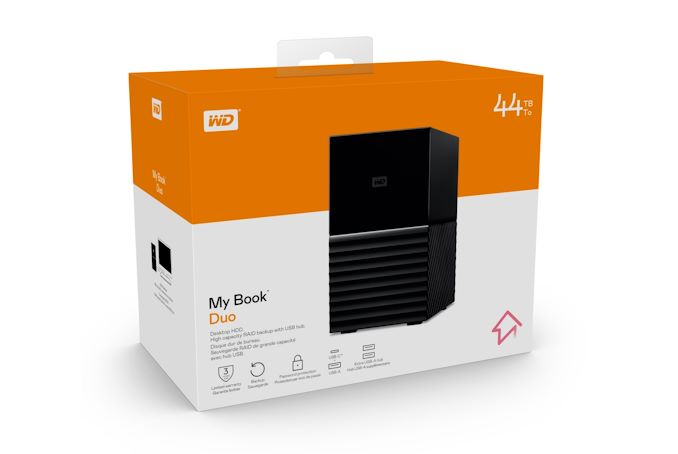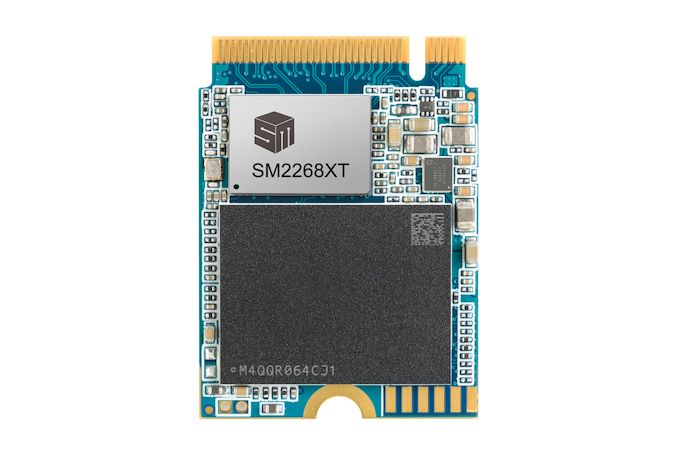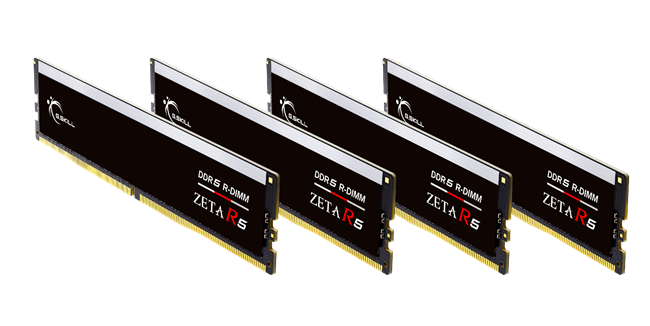Results 11,631 to 11,640 of 12089
Thread: Anandtech News
-
02-03-23, 04:55 AM #11631
Anandtech: The MSI MPG A1000G PCIE5 PSU Review: Balance of Power
Back in December, we had the opportunity to take a look at MSI's MEG A1300P power supply, the company's latest flagship PSU. Besides offering plenty of power, the MEG Ai1300P was also MSI's first ATX 3.0 power supplies – and one of the first ATX 3.0 PSUs on the market overall. And while it was admittedly not a groundbreaking design overall, it was still a seminal work of sorts, sketching out a rough picture of what we should expect from other ATX 3.0 PSU designs, including MSI's own.
The MEG Ai1300P was a true flagship PSU, for all the pros and cons that come with that. As impressive as it was overall, it was also aimed at those willing and able to deal with the hefty price tag. This is all well and good for the small fraction of the market that can afford such a high caliber PSU, but for most PC builders, budgets are a very real thing.
So, for today’s review, we are taking a look at something a little more downmarket from MSI: their MPG series. Like their flagship units, the new MPG PSUs are also are ATX 3.0 Ready, but they come at more reasonable prices. Despite that shift, the unit we're testing today, the MPG A1000G, is still one of the most powerful PSUs MSI offers (as well as being the top MPG unit), capable of delivering a kilowatt of PC power.
More...
-
02-10-23, 05:33 PM #11632
Anandtech: ASRock Industrial's 4X4 BOX 7000/D5 Series Brings Zen 3+ and USB4 40Gbps t
ASRock Industrial's lineup of ultra-compact form-factor machines in the NUC BOX (Intel-based) and 4X4 BOX (AMD-based) series has gained popularity over the last couple of years. Being the first to market with the latest platforms has been one of the key reasons behind this. In 2022, the company had launched the Intel Alder Lake and AMD Cezanne UCFF systems together, with the NUC BOX-1200 series and the 4X4 BOX-5000 series becoming available for purchase within a few weeks of each other. Earlier this year, the Intel Raptor Lake-based NUC BOX-1300 series was launched (our review) and is already available for purchase. The company recently took the wraps off the 4X4 BOX 7000/D5 series based on AMD's low-power Rembrandt-R APUs. These APUs sport Zen 3+ cores along with a RDNA2 iGPU fabricated on a TSMC 6nm process.
One of the key updates in the new 4X4 BOX systems is the move to DDR5 SODIMMs. The other updates in the platform such as support for a PCIe 4.0 x4 M.2 NVMe SSD and USB4 40 Gbps bring it almost on par with the premium UCFF systems based on Intel processors. Full-fledged USB4 support inclusive of PCIe tunneling has been somewhat of a hit or miss on AMD platforms, as many OEMs have refrained from integrating the necessary board components to enable it. AMD itself had some work to do on the firmware side before the feature baked into the hardware of Rembrandt and later APUs could be enabled. The good news here is that the ASRock Industrial 4X4 BOX 7000/D5 series has two USB4 ports capable of supporting DisplayPort 1.4 signals as well as PCIe tunneling - this means that Thunderbolt 3 peripherals should work when connected to those Type-C ports.
The 4X4 BOX 7000/D5 series comes in two flavors. The specifications of both models are summarized in the table below.
Note that the M.2 2280 support is enabled by a separate bracket, similar to the previous NUC BOX and 4X4 BOX systems with 2.5" drive support and dual LAN capabilities.ASRock Industrial 4X4 BOX 7000/D5 (Rembrandt-R) Lineup Model 4X4 BOX-7735U/D5 4X4 BOX-7535U/D5 CPU AMD Ryzen 7 7735U
8C / 16T
2.7 GHz (Up to 4.75 GHz)
28WAMD Ryzen 5 7535U
6C / 12T
2.9 GHz (Up to 4.55 GHz)
28WCPU AMD Radeon 680M
(12 CU / 768 Shaders) @ 2.2 GHzAMD Radeon 660M
(6 CU / 384 Shaders) @ 1.9 GHzDRAM Two DDR5 SO-DIMM slots
Up to 64 GB of DDR5-4800 in dual-channel modeMotherboard 4.02" x 4.09" UCFF Storage SSD 1x M.2-22(42/60/80) (PCIe 4.0 x4 (CPU-direct)) DFF 1 × SATA III Port (for 2.5" drive) Wireless Mediatek MT7922 (RZ616)? Wi-Fi 6E
2x2 802.11ax Wi-Fi (2.4Gbps) + Bluetooth 5.2 moduleEthernet 1x 2.5 GbE RJ-45 (Realtek RTL8125)
1x GbE RJ-45 (Realtek RTL8111EPV with DASH Support)USB Front 1 × USB 3.2 Gen 2 Type-A
2x USB4 (with DisplayPort 1.4a Alt Mode)Rear 2 × USB 2.0 Type-A Display Outputs 1 × HDMI 2.1 (Rear, up to 8Kp60)
1 × DisplayPort 1.4a (Rear, up to 4Kp60)
2 × DisplayPort 1.4a (using Front Panel Type-C ports, up to 4Kp60)Audio 1 × 3.5mm audio jack (Realtek ALC233) PSU External (19V/90W) Dimensions Length: 117.5 mm
Width: 110 mm
Height: 47.85 mm
Overall, these systems bring the AMD UCFF scene on par with the high-end Intel NUCs and its clones - except for the newer NUC BOX-1300/D5 series which has Thunderbolt 4 ports that also have USB 3.2 Gen 2x2 support for 20Gbps PSSDs. The USB4 ports in the 4X4 BOX 7000/D5 support only up to USB 3.2 Gen 2 speeds in legacy USB (non-PCIe tunneling) mode. The RDNA2 iGPU in the new machines should also help these systems perform as well as the the Alder Lake and Raptor Lake mini-PCs in graphics-heavy workloads.
We have reached out to ASRock Industrial for clarity on market availability dates and pricing, and will update the article with the details after receiving them.
Gallery: ASRock Industrial's 4X4 BOX 7000/D5 Series Brings Zen 3+ and USB4 40Gbps to UCFF Systems

More...
-
02-15-23, 03:15 PM #11633
Anandtech: Intel Launches Xeon W-3400 and W-2400 Processors For Workstations: Up to 5
For all of the singular focus that Intel has placed on its consumer Core desktop CPU parts in the last few years, you could be forgiven for thinking that Intel has forgotten about their Xeon premium processor lineups for workstations. Between the de facto retirement of Intel’s desktop-grade Xeon W-1x00-series lineup, and the repeated delays of Intel’s current-generation big silicon parts for servers, the Sapphire Rapids-based 4th Generation Xeon Scalable series, there hasn’t been much noise from Intel in the workstation space in the last few years. But now that Sapphire Rapids for servers has finally launched, the logjam in Intel’s product roadmap has at last cleared out, and Intel is finally in a position to resume cascading their latest silicon into new workstation parts.
This morning Intel is announcing their first top-to-bottom refresh of workstation parts, the Xeon W-3400 and Xeon W-2400 series. Aimed at what Intel is broadly classifying as the Expert Workstation and Mainstream Workstation markets respectively, these chip lineups are intended for use in high-performance desktop workstation setups, particularly those that require more CPU cores, more PCIe lanes, more memory bandwidth, or a combination of all three elements. Based on the same Sapphire Rapids silicon as Intel’s recently-launched server parts, the new Xeon W SKUs will bring down many (but not all) of the features that have come to define Intel’s leading-edge server silicon, along with a new chipset and motherboards that are more suitable for use in high-performance workstations.
More...
-
02-15-23, 03:15 PM #11634
Anandtech: Western Digital Launches 22 TB HDD for Consumers in Updated My Book Portfo
Western Digital's 22 TB hard disk drives hit retail in July 2022, with a trio of products catering to the prosumer and business / enterprise markets. Today, the company is announcing an update to their portfolio of HDD-using direct-attached storage products - the My Book and My Book Duo. These products now come in new SKUs utilizing 22 TB HDDs tweaked for consumer workloads.
The My Book is an external storage solution that comes with a USB 3.2 Gen 1 Type-A interface and utilizes a single hard disk. It requires an external power adapter. On the other hand, the My Book Duo is a dual-drive solution with hardware RAID. By default, the drives are configured in RAID-0. The product also includes hub functionality. It comes with a USB 3.2 Gen 1 Type-C interface and also has two USB 3.2 Gen 1 Type-A downstream ports. Both products come with 256-bit hardware encryption support (requires WD Security software installation on client system to configure and use passwords). The WD Backup software component is also available for both systems in order to enable easy configuration of backups.
Previous WD My Book Duo releases used WD Red hard drives, but the company has not publicly confirmed the nature of the 22 TB HDD used in the new SKUs. No performance numbers were provided, but it is expected to be in the same ballpark as the previous generation SKUs.
Western Digital's WD My Book (2023) External Storage Devices Capacity Transfer Rate Interface Dimensions Model Number Price 4 TB Up to
250 MB/s,
depends on modelUSB 3.2 Gen 1 Type-A Height: 170.6 mm / 6.7”
Length: 139.3 mm / 5.5”
Width: 49 mm / 1.9"WDBBGB0040HBK $95 6 TB WDBBGB0060HBK $119 8 TB WDBBGB0080HBK $140 12 TB WDBBGB0120HBK $237 14 TB WDBBGB0140HBK $280 16 TB WDBBGB0160HBK $330 18 TB WDBBGB0180HBK $300 22 TB WDBBGB0220HBK $600 The company already has the new SKUs available for purchase in the retail market. The 22 TB My Book is priced at $600 (commensurate with the pricing of the bare 22 TB drives introduced last year), while the 44 TB My Book Duo is priced at $1500. A $300 premium for a RAID-0 / RAID-1 controller and a couple of downstream USB 3.2 Gen 1 Type-A ports appears very steep, but that is the premium the company expects early adopters to pay (and is par for the course, based on how the previous My Book Duo SKUs were priced at launch). The single HDD My Book looks to be a cost-effective solution for consumers looking for an off-the-shelf backup solution with high capacity requirements.Western Digital's WD My Book Duo (2023) External Storage Devices Capacity Transfer Rate Interface Dimensions Model Number Price 16 TB Up to
360 MB/s?,
depends on modelUSB 3.2 Gen 1 Type-C Height: 180 mm / 7.09”
Length: 160 mm / 6.3”
Width: 100 mm / 3.94"WDBFBE0160JBK $440 20 TB WDBFBE0200JBK $668 24 TB WDBFBE0240JBK $900 28 TB WDBFBE0280JBK $1200 36 TB WDBFBE0360JBK $1500 44 TB WDBFBE0440JBK $1500
More...
-
02-16-23, 11:27 AM #11635
Anandtech: Silicon Motion SM2268XT DRAM-less NVMe SSD Controller: PCIe 4.0 Speeds on
The excitement in the client SSD space recently has understandably been on the Gen 5 front. However, cooling requirements have made it difficult for vendors to bring effective M.2 NVMe Gen 5 SSDs to the market. In that context, it appears that Gen 4 M.2 SSDs will continue to have a much longer runway than was previously estimated. In order to better serve that market segment, Silicon Motion is introducing a new product in their PCIe 4.0-capable NVMe SSD controller lineup. The company's roadmap is not much of a secret, as we do expect their Gen 5 client controllers to land in Q4 2023 - in fact, an end product based on it from ADATA was already demonstrated by ADATA at the 2023 CES. However, today marks the official launch date for the SM2268XT - the third-generation DRAM-less Gen 4 SSD controller meant to play in the entry-level segment in terms of pricing, but move to the high end in terms of performance .
The key updates in the SM2268XT over the SM2267XT and SM2269XT are the increase in the per-channel data rate from 1600 MT/s to 3200 MT/s and support for the latest 2xx layer 3D TLC (as well as QLC) from different flash vendors. The new controller also brings in support for some NVMe 2.0 features (compared to NVMe 1.4 in the SM2267XT and SM2269XT). Like the SM2269XT, the LDPC engine codeword size in the SM2268XT is also 4KB (compared to 2KB in the SM2267XT). The move to a 12nm process also brings in better power efficiency.
THE SM2268XT will be competing against in-house controllers from Western Digital (such as the one used in the WD_BLACK SN770), and the upcoming Phison E21T as well as InnoGrit's RainierQX IG5220. The claimed performance numbers across all four corners for the SM2268XT are leading in its class.
The company indicates that the SM2268XT is currently sampling to its key customers and the launch of SSDs based on it should be imminent. We expect the usual suspects such as ADATA to announce SSDs based on the new controller soon.Silicon Motion Client/Consumer Gen 4 NVMe SSD Controllers SM2264 SM2267 SM2267XT SM2269XT SM2268XT Market Segment High-End Consumer Mainstream Consumer Manufacturing
Process12nm 28nm 12nm Arm CPU Cores 4x ARM Cortex R8 2x ARM Cortex R5 2x ARM Cortex R8 Error Correction 4KB LDPC 2KB LDPC 4KB LDPC DRAM Support DDR4, LPDDR4(X) DDR3, DDR3L, LPDDR3, DDR4, LPDDR4 None / HMB Host Interface PCIe 4.0 x4 NAND Channels, Interface Speed 8ch
1600 MT/s8ch
1200 MT/s4ch
1200 MT/s4ch
1600 MT/s4ch
3200 MT/sCEs per Channel 8 8 4 Sequential Read 7500 MB/s 3900 MB/s 3500 MB/s 5100 MB/s 7400 MB/s Sequential Write 7000 MB/s 3500 MB/s 3000 MB/s 4800 MB/s 6500 MB/s 4KB Random Read IOPS 1.3M 500K 500K (HMB) / 200K (No HMB) 900K 1.2M 4KB Random Write IOPS 1.2M 500K 500K 900K 1.2M
More...
-
02-17-23, 09:59 AM #11636
Anandtech: The Montech Titan Gold 1200W PSU Review: A Capable Contender for the ATX 3
Today we are taking a look at a new high-end power supply from industry newcomer Montech. Coming off the success of their mid-power units like the Century Gold series, the company is taking the next step to establishing a full top-to-bottom PSU product stack with the release of their first family of ATX 3.0 units, the Titan Gold Family.
Based on a proven Channel-Well Technologies design that has been upgraded to add the 12VHPWR connector and meet ATX 3.0 compliance, Montech is in a position to make a strong start. Especially as the company isn't afraid to competitively price their Titan Gold PSUs, even as ATX 3.0 units are only available from a handful of vendors. With 1200 Watts of power on hand, the Titan Gold 1200W is equipped to drive all but the most power-hungry of systems.
More...
-
02-22-23, 09:39 PM #11637
Anandtech: The Cooler Master V SFX Platinum 1100 PSU Review: Testing the Limits of SF
Today we're looking at a rather remarkable power supply from prolific peripherals producer Cooler Master. The company has put together a 1100 Watt, ATX 3.0 compliant unit that fits entirely within the SFX form factor for compact PCs. The resulting PSU is by far the most power-dense unit we've ever reviewed, and is a significant feat of engineering in and of itself.
But Cooler Master and their OEM, Sysgration, are also testing the practical limits of the SFX form factor with their design. Even with no cubic inch wasted, regulating over a kilowatt of energy – and spiking as high as two kilowatts – is a lot of work for such a small power supply. So Cooler Master has needed to make some trade-offs here in terms of price and power quality in order to meet their overall power delivery requirements, resulting in a PSU that does well at delivering raw power, but it's especially well-rounded overall.
More...
-
02-27-23, 12:17 PM #11638
Anandtech: The AMD Ryzen 9 7950X3D Review: AMD's Fastest Gaming Processor
This week is the long-awaited launch of AMD's second generation of V-Cache equipped consumer chips, the Ryzen 7000X3D family. Aimed primarily at gamers, tomorrow morning AMD will be releasing a pair of their latest-generation Ryzen 7000 chips with the extra cache stacked on, including the Ryzen 9 7950X3D (16C/32T) and the Ryzen 7 7900X3D (12C/24T). Both chips build upon their Ryzen 7000X-series predecessors by adding a further 64MB of L3 cache, bringing them to an impressive total of 128 MB of L3 cache.
Meanwhile, a third SKU, the AMD Ryzen 7 7800X3D, is in the works for April 6th. That part will offer 8 CPU cores and 96 MB of L3 cache, making it the most direct successor to the Ryzen 7 5800X3D.
Ultimately, all three chips will serve to update AMD's product stack by combining the strengths of the Zen 4 CPU architecture with the performance benefits of the extra L3 cache, which during the overlapping period of the last several months, has been split between the Ryzen 5000 and Ryzen 7000 families. In short, PC gamers will finally be able to have their cake and eat it too, gaining access to AMD's Zen 4 microarchitecture and its myriad of benefits (higher IPC, higher clockspeeds, DDR5, PCIe 5) with a nice helping of additional L3 cache slathered on top.
From that stack, today we're reviewing the new flagship Ryzen 9 7950X3D. The 7950X3D offers 16 Zen 4 cores spread over two CCDs (8C/16T per CCD). AMD had to elect one of the CCDs to stack the additional L3 cache onto, resulting in a new-to-AMD heterogeneous CPU design, but they do have some special sauce as a garnish to make it work. We aim to determine if the Ryzen 9 7950X3D is the chip gamers have been yearning for and how it stacks up against other Ryzen 7000 chips (and Intel's 13th Gen) in our test suite.
More...
-
03-02-23, 08:15 PM #11639
Anandtech: G.Skill Zeta R5 DDR5 RDIMMs: Up to DDR5-6800 for Intel Xeon W-3400X and W-
G.Skill has announced its first RDIMM memory products to the market, their Zeta R5 memory series. Designed for use with Intel's new Sapphire Rapids workstation processors, the Zeta R5 DDR5 RDIMMs are explicitly intended for use with Intel's Xeon W-3400X and W-2400X series processors, with integrated XMP 3.0 profiles and proper out-of-band ECC support (not just on-die ECC memory as with DDR5 UDIMMs). It also marks G.Skill's first time venturing into the workstation memory market, with kits ranging from DDR5-5600 to DDR5-6400.
Typically G.Skill focuses on manufacturing high-end memory for desktop platforms. G.Skill's memory ranges, such as the Trident Z5, are a favorite among enthusiasts and overclockers around the globe. While its Trident Z5 modules have been pushed up to DDR5-8888 using Intel's 12th Gen Core series platform, we've seen G.Skill DDR5 memory hitting extreme heights of DDR5-10350 courtesy of extreme overclocker Safedisk.
While not as flexible with memory configurations and the overclockable nature of G.Skills UDIMM memory, Intel and its latest Xeon W-3400 and W-2400 processors for workstations based on its Sapphire Rapids architecture look to break the mold by being one of the first workstation platforms to introduce fast and overclocked XMP memory profiles. Combining the steadfast nature of ECC RDIMM memory with overclocking is a stark contrast to what is considered the norm for the highly conservative and stability-focused workstation market.
G.Skill has not only developed its latest Zeta R5 RDIMM DDR5 memory for Intel's Sapphire Rapids workstations, but its fastest kit comes with an XMP profile of DDR5-6400 with CL32 latencies in capacities of up to 128 GB (8 x 16 GB) and 64 GB (4 x 16 GB). Other kits announced from G.Skill's latest Zeta R5 DDR5 RDIMM memory include three varieties of DDR5-6000 memory, each with different CAS latencies and capacities. The G.Skill Zeta R5 DDR5-6000 memory comes with tighter latencies of CL 28-39-39-96 while also being available in 128 GB (4 x 32 GB and 8 x 16 GB) and 64 GB (4 x 16 GB).
Looking down the G.Skill Zeta R5 DDR5 RDIMM product stack, there are two more kits with 6000 MT/s, this time with latencies of CL 30-39-39-96 and CL 32-38-38-96. These kits are available in kits of up to 256 GB (8 x 32 GB), 128 GB (8 x 16 GB + 4 x 32 GB), as well as a 64 GB (4 x 16 GB) kit. The slowest kit of G.Skill Zeta R5 features speeds of DDR5-5600 with tighter latencies of CL 28-34-34-89 and also comes available in 256 GB, 128 GB, and 64 GB kits; the same capacities and configuration as the two DDR5-6000 kits mentioned above.G.SKill Zeta R5 Series DDR5 RDIMM Memory Specifications Frequency Latency Timings Capacities DDR5-6400 32-39-39-102 128 GB (8 x 16 GB)
64 GB (4 x 16 GB)DDR5-6000 28-39-39-96 128 GB (4 x 32 GB)
128 GB (8 x 16 GB)
64 GB (4 x 16 GB)DDR5-6000 30-39-39-96256 GB (8 x 32 GB)
128 GB (4 x 32 GB)
128 GB (8 x 16 GB)
64 GB (4 x 16 GB)DDR5-6000 32-38-38-96256 GB (8 x 32 GB)128 GB (4 x 32 GB)128 GB (8 x 16 GB)64 GB (4 x 16 GB)DDR5-5600 28-34-34-89 256 GB (8 x 32 GB)128 GB (4 x 32 GB)128 GB (8 x 16 GB)64 GB (4 x 16 GB)
Intel's Xeon W-3400 and W-2400 series support eight and four channels of memory, respectively. Memory support is also dependent on Intel's W790 workstation motherboards. It should be noted that because Intel's Xeon W-3400 and W-2400 processors require RDIMMs (a first for the Xeon workstation family), these new RDIMM kits with integrated XMP profiles are only designed for the aforementioned Xeons. And even then, only the X series chips, such as Intel's latest 56-core overclockable goliath, the Xeon w9-3495X, feature official support for memory overclocking.
Gallery: G.Skill Zeta R5 DDR5 RDIMMs: Up to DDR5-6800 for Intel Xeon W-3400X and W-2400X





G.Skill hasn't shared any details on the expected pricing of its Zeta R5 series of RDIMM DDR5 memory. G.Skill does, however, state that their Zeta R5 series will be available sometime in March.
Source: G.Skill
More...
-
03-02-23, 08:15 PM #11640
Anandtech: OWC Envoy Pro Mini Review: SSD in a Thumb Drive Exceeds Expectations
OWC has been a key player in the storage industry over the last few decades, particularly for Apple users. Their lineup of portable flash-based direct-attached storage devices has a great reputation in the market, thanks to their focus on performance consistency for professional workloads. The company is also known for being upfront about their products' capabilities under worst-case conditions. Recently, the company resurrected their OWC Envoy Pro Mini lineup - back in 2016, they had a USB 3.2 Gen 1 Type-A thumb drive with capacities of up to 240 GB under the tag. The new version is a complete redesign with USB 3.2 Gen 2 (10 Gbps) speeds and comes with both Type-A and Type-C interfaces in a sleek and compact thumb drive form factor.
Kingston's DataTraveler Max gathered significant market share in the high-performance thumb drive segment thanks to its first mover advantage. How does OWC's updated Envoy Pro Mini stack up against it? Can its internal architecture / firmware configuration challenge its dominance? Read on for detailed insights into the performance and value proposition of the 1TB version of the new OWC Envoy Pro Mini.
More...
Thread Information
Users Browsing this Thread
There are currently 26 users browsing this thread. (0 members and 26 guests)





 Quote
Quote























Bookmarks